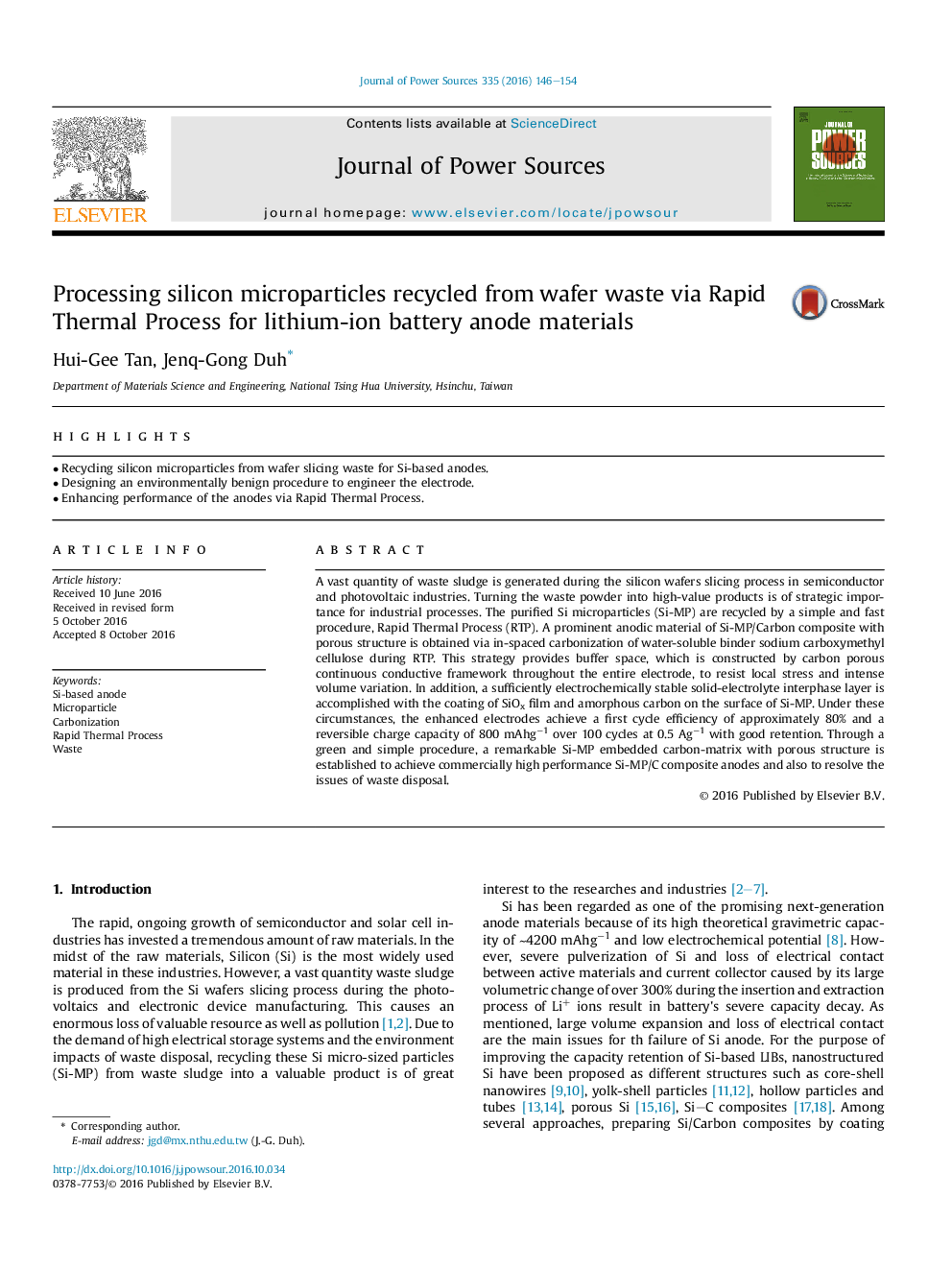| Article ID | Journal | Published Year | Pages | File Type |
|---|---|---|---|---|
| 5150083 | Journal of Power Sources | 2016 | 9 Pages |
Abstract
A vast quantity of waste sludge is generated during the silicon wafers slicing process in semiconductor and photovoltaic industries. Turning the waste powder into high-value products is of strategic importance for industrial processes. The purified Si microparticles (Si-MP) are recycled by a simple and fast procedure, Rapid Thermal Process (RTP). A prominent anodic material of Si-MP/Carbon composite with porous structure is obtained via in-spaced carbonization of water-soluble binder sodium carboxymethyl cellulose during RTP. This strategy provides buffer space, which is constructed by carbon porous continuous conductive framework throughout the entire electrode, to resist local stress and intense volume variation. In addition, a sufficiently electrochemically stable solid-electrolyte interphase layer is accomplished with the coating of SiOx film and amorphous carbon on the surface of Si-MP. Under these circumstances, the enhanced electrodes achieve a first cycle efficiency of approximately 80% and a reversible charge capacity of 800Â mAhgâ1 over 100 cycles at 0.5Â Agâ1 with good retention. Through a green and simple procedure, a remarkable Si-MP embedded carbon-matrix with porous structure is established to achieve commercially high performance Si-MP/C composite anodes and also to resolve the issues of waste disposal.
Related Topics
Physical Sciences and Engineering
Chemistry
Electrochemistry
Authors
Hui-Gee Tan, Jenq-Gong Duh,
